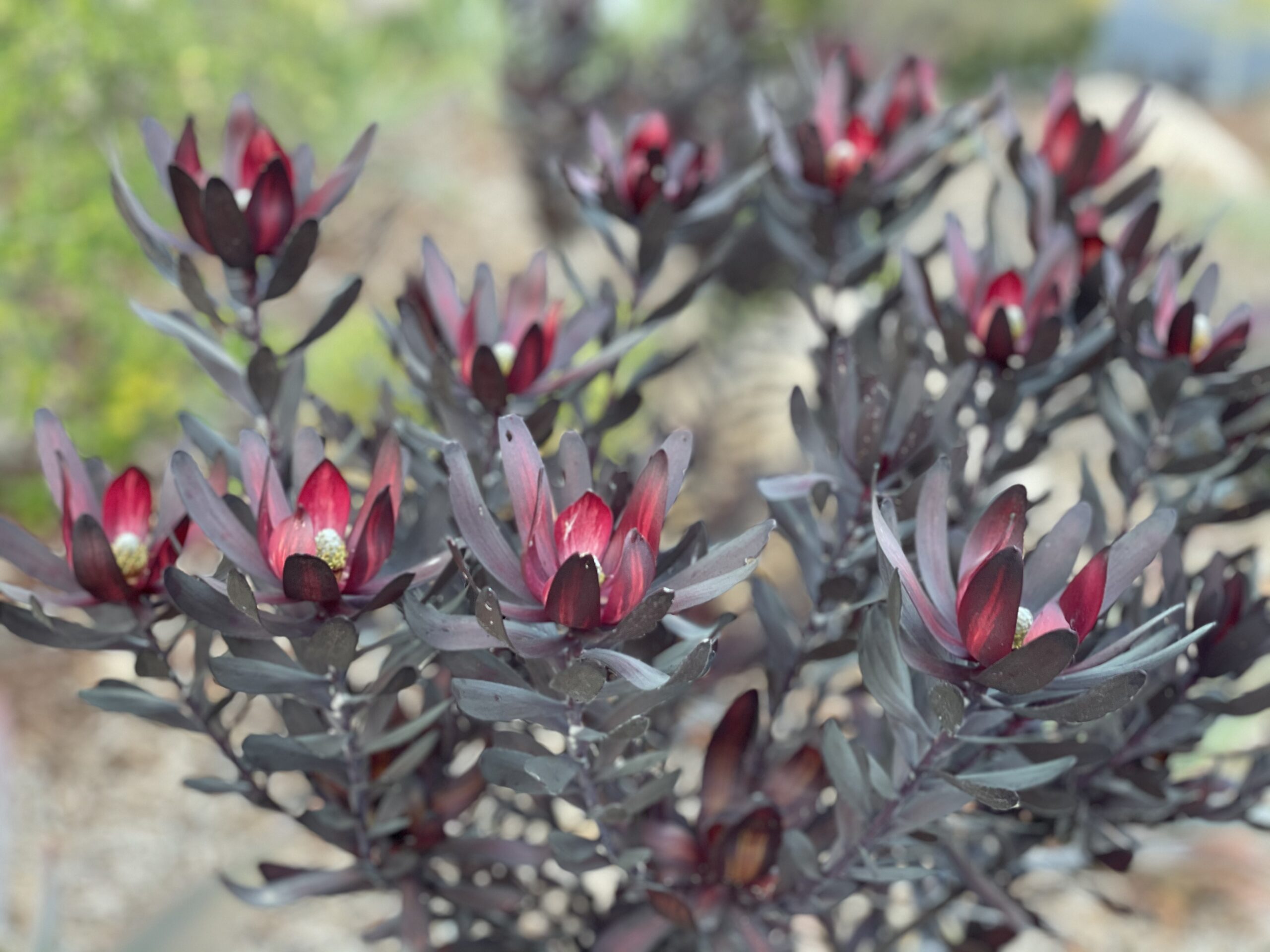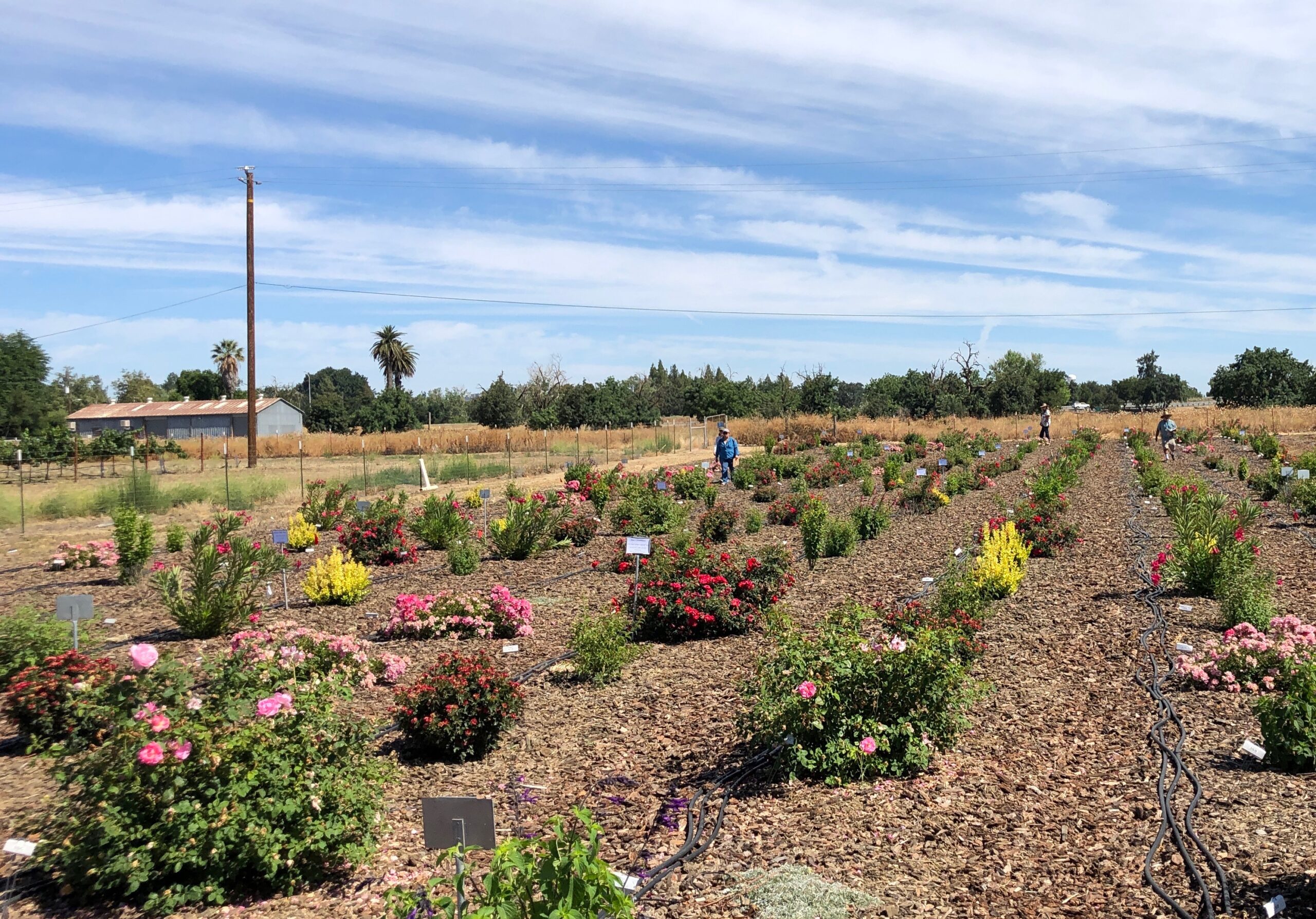

Contributor

This conversation took place last summer when the author chatted with a fellow professional gardener as they worked side by side in The Ruth Bancroft Garden.
With just over two acres of cultivated garden open to the public, The Ruth Bancroft Garden is small. The garden began as a private landscape when Ruth Bancroft began collecting and planting succulents on the property in the 1970s. Located on a busy suburban street, it’s an oasis of a garden. Or perhaps it’s an inverted oasis—an artfully arranged collection of drought-tolerant plants in a town of streets lined with irrigated lawns and manicured shrubs.
I meet Walker Young, Assistant Curator at the garden, at the front gates one hot midsummer morning. I usually begin interviews with a set of predetermined questions; however, Walker talks freely as he picks a path through the garden, so I let him lead us on a free-form conversation about his interests, work, ideas, frustrations, and successes in the garden.

Walker and I arrive at a bed in the center of the garden under a wooden structure draped with shade cloth. The wood is painted a soft green that I am told was divined by Ruth and a friend by squinting their eyes in the garden to imagine its combined color. Below the wooden structure is a long garden bed planted with an exuberant mix of relatively small-statured succulents. It’s a colorful bed with bright blues and greens. We set to work, crouched, cleaning the succulents’ spent foliage.
Walnut Creek, where The Ruth Bancroft Garden is located, has a more extreme climate than one might imagine for the Bay Area. Summers are hot, and, compared to Berkeley and San Francisco, winters are cold. The bed we are working in is covered with shade cloth because the succulents planted there wouldn’t survive the summer’s heat. Walker explains that many of the plants’ roots would “cook” in the hot weather, and watering in the heat can lead to rot. It is an ongoing challenge; Walker is always trying to hit the balance that will keep the plants healthy.

Throughout our conversation, we compile a long, varied list of the jobs Walker does at the garden. His duties include caring for the garden’s private plant collection, propagating plants for use in the public garden, periodically mucking out the pond, driving the tractor, topdressing the garden beds with rock, monitoring aesthetics, hauling trash, and organizing bed renovations. No task in the garden is too small or too big.

In the midst of the work needed to maintain and develop the garden, Walker makes time to focus on creative pursuits, like laying and organizing the rock that builds up garden beds. Pointing out two rocks laid seamlessly in a bed of smaller rocks he tells me, “I spend a lot of time looking at which rock faces look like they were parts of a greater whole. These rocks have a similar texture; they look like they’re parts of the same vein. I think that’s the alchemy of it, the part that takes a while.” This makes me think of geological time and drift and the wonder of subtly expressing it in a garden bed.


Beginning in early 2014, Walker and his fellow gardeners took on a series of bed renovations with the intention of marrying Ruth Bancroft’s bold, colorful, Roberto Burle Marxian aesthetic with a more naturalistic approach and to choose plants that fit the current maintenance regime. Piles of rock were trucked in and mounded to increase drainage capacity and add topographical complexity to the existing beds. Depending on the situation, old plantings were left in place or moved, and new plantings were added to the established mix.


Walker points out a bed toward the back of the garden whose renovation he considers a success. Its central feature is a diffuse boomerang of Aloe striata and its hybrids and relatives. The plants are massed to create a bold, simple visual impact, but the planting is designed to reflect the look of a healthy stand of Aloe in its native habitat.

Our conversation shifts to planting design and I am treated to a peek into the workings of plant selection at the garden. Walker tells me half-laughing, “Contrast is one of the biggest things we try to achieve. ‘It doesn’t make any contrast’ is the best argument for killing someone’s creative idea in the garden.” Indeed, this commitment to design integrity and plant health is expressed in a garden that celebrates the beauty of plants.
The Ruth Bancroft Garden is located in Walnut Creek, CA, and open to the public Tuesday through Sunday all year. For more information, visit www.ruthbancroftgarden.org.
Share:
Social Media
Garden Futurist Podcast
Most Popular
Videos
Topics
Related Posts

Expand Your Palette: Waterwise Plants for your Landscape
There’s nothing more thrilling to plant lovers than discovering new plants to test in the garden. Here in the southernmost corner of California, we have

What Climate is This? Part Two – A Garden Futurist Special
Winter 2022 Listen to the Part 2 Podcast here. If you live in the Pacific region, you know that seasons in your garden look different

Add Water: Scratching the Surface on Irrigation
Fall 2022 At its simplest, landscape irrigation is a combination of how much and how frequently water should be applied. However, these are two expansive

Just Add Water: How to Hack Your Controller
Fall 2022 Read the preceding article here. A weather-based irrigation protocol allows you to adjust irrigation to meet plant needs by irrigating more frequently in










Responses